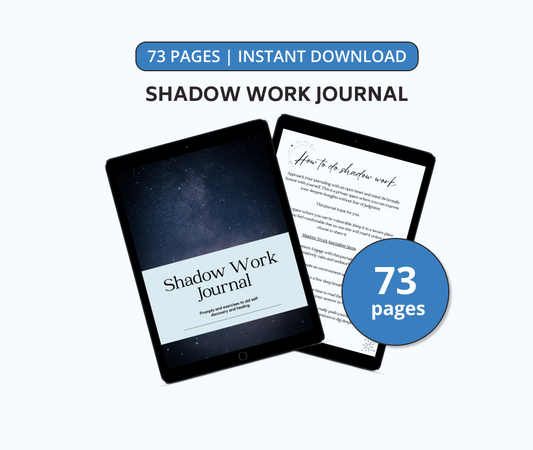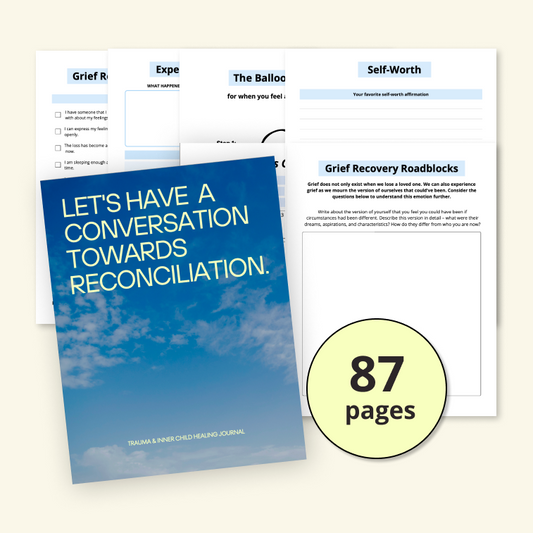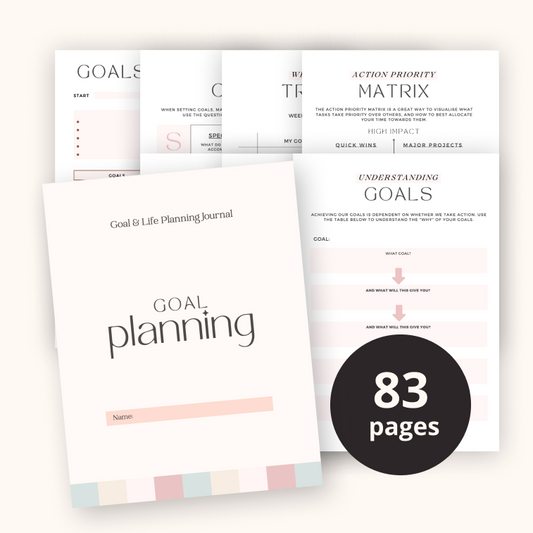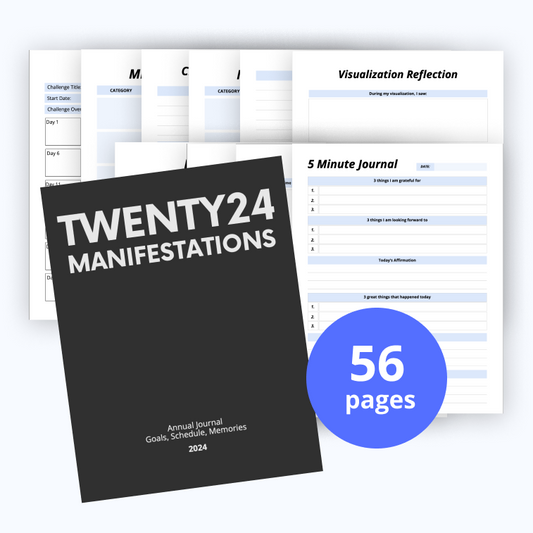Struggling with the emotional rollercoaster of Borderline Personality Disorder (BPD) can often leave you feeling isolated and misunderstood. You’re not alone, and journaling might just be the friend you didn’t know you needed. Imagine unlocking a world where your thoughts are heard, and your feelings are validated—journal prompts specifically tailored for BPD can offer you that sanctuary.
You’re here because you’re searching for a way to navigate the complexities of your emotions, seeking clarity amidst the chaos. Get ready to dive into a collection of journal prompts designed to guide you through self-reflection and emotional exploration. They’re not just questions; they’re keys to self-discovery and healing.
Stick around, because you’re about to embark on a journey of personal growth that’s both enlightening and therapeutic. Let’s turn the page together and start writing your way to a more balanced mind.
What Is Borderline Personality Disorder (BPD)?
You’ve probably heard of BPD before but might not know exactly what it entails. Borderline Personality Disorder is a mental health condition characterized by a pervasive pattern of instability in interpersonal relationships, self-image, and emotions. Folks with BPD may experience intense episodes of anger, depression, and anxiety that can last from a few hours to days.
Understanding BPD is like trying to tune into a radio frequency with a lot of interference—it’s tricky, and sometimes the signals come through choppy. People with BPD often struggle with feeling misunderstood or alone, even in a crowd. It’s about navigating extreme emotional whirlwinds and often not having the tools or support to manage them effectively.
Journaling can be a crucial tool in your self-care toolbox. It’s all about exploring feelings and thoughts in a safe, structured, and private way. Tailored journaling prompts specifically for BPD can act as stepping stones through the often-turbulent waters of your emotions.
Here’s a warm hug in the form of 20 journal prompts designed just for you:
- Reflect on a time when you felt at peace. What was it about that moment that brought you tranquility?
- Identify a situation where you managed your emotions successfully. What strategies did you use?
- What are your personal boundaries, and how do you communicate them to others?
- Write about a person you trust. Why do you feel safe with them?
- Recall a moment when you acted impulsively. How did you feel afterward?
- Explore your identity. What are the core values and beliefs that define you?
- List out your fears. Next to each one, write a way you can address it.
- Imagine your best life. What steps can you take today to move towards that vision?
- Think of a recent conflict. How did it make you feel and what did you learn from it?
- What are some things you love about yourself?
- Picture yourself as a child. What would you say to comfort him or her?
- Observe your current emotions. Describe them as a weather pattern.
- Write a letter to your future self. What hopes do you have for them?
- Acknowledge a compliment you struggled to accept. Why was it challenging?
- Delve into a dream you’ve had recently. What elements stood out and why?
- Name a piece of advice you wish you had received earlier in life.
The Benefits of Journaling for BPD
Discovering the power of journaling for your BPD is like unlocking a secret garden within yourself—a place where you can wander freely and explore the wild landscapes of your emotions without fear of judgment. Journaling offers therapeutic benefits that can be a game-changer for managing BPD symptoms. It’s a form of self-care that doesn’t ask for anything but honesty and the willingness to engage.
When you journal, you’re taking the time to listen to your inner voice, and this process is therapeutic in itself. It’s like having a personal therapist available at any moment. This simple act can lead to increased self-awareness, which is crucial for anyone dealing with BPD. By putting your thoughts and feelings onto paper, you’re able to process and understand emotions that often seem tangled.
Moreover, journaling helps you track your mood and recognize patterns in your behavior that might be tied to BPD triggers. Identifying these patterns is the first step toward effective management of symptoms. Not only does writing help in emotional regulation, but it can also aid in problem-solving and decision-making.
Wholesome Prompts to Guide Your Journey
Embarking on this journey, you’ll find Wholesome’s prompts that resonate deeply with your experiences and feelings. Here’s a list of curated prompts designed to help you navigate the complexities of BPD:
- What emotion is most present in your life today?
- Describe a situation that caused you distress and how you responded.
- What does your ideal support system look like?
- Write about a time you felt misunderstood. How did it affect you?
- Define what self-care means to you.
- Reflect on a goal you achieved and how it made you feel.
- Recall a moment of happiness and explore why it felt good.
- Which relationships in your life feel most nurturing?
- Write a letter to your younger self. What would you say?
- Outline steps you can take to set healthy boundaries.
- Identify a fear and how you can confront it.
- Discuss how you’ve handled a recent conflict?
- Compose a list of activities that bring you joy.
- Examine a mistake you’ve made and what you learned from it.
- Detail what you love about yourself.
- Ponder on what forgiveness means to you.
- Analyze a dream you had recently.
Understanding the Power of Journal Prompts
Journal prompts are your cozy conversation starters for the soul. They’re like gentle nudges that encourage you to unearth your deepest thoughts and feelings. Empowering and enlightening, these prompts guide you through the winding paths of your mind, helping you to illuminate and make sense of your inner world.
Think of each prompt as a personal cheerleader, rooting for your clarity and understanding. They’re not just questions; they’re stepping stones to self-discovery, offering a structured way to navigate the emotional labyrinth that often comes with BPD. With the right prompt, you’re no longer just staring at a blank page. You’re embarking on a journey of self-exploration, one that holds the potential to transform the way you think, feel, and react.
Dive Into Self-Discovery with These Prompts
Get ready to meet your inner self with these Wholesome journal prompts designed to spark insight and foster emotional growth:
- How am I feeling right now, and what can I do to self-soothe?
- What triggered my last emotional shift, and how did I handle it?
- Describe a situation where I felt misunderstood. What can I learn from it?
- Reflect on a moment of joy from today. What made it special?
- What are my strengths, and how can I use them in relationships?
- Write about a time when you overcame a challenge. What did it teach you?
- Identify a thought that often causes distress. Can I approach it differently?
- When do I feel most safe and secure? How can I recreate that feeling?
- What patterns in my behavior do I want to change, and why?
- How do my BPD traits show themselves in daily life, and what are their impacts?
- Record a dream and explore its possible meaning and significance.
- List five things I’m grateful for and why they bring me joy.
- Craft a letter to my future self. What hopes and dreams do I want to share?
- Describe a place that brings me peace. What sensory details stand out?
- Explore a memory that shapes who I am today. How has it influenced my actions?
- Who in my life has been a positive influence, and what have they taught me?
- When I feel abandoned, what thoughts and feelings arise?
- Write about a goal I achieved. What steps did I take to get there?
Journal Prompt #1: Exploring Your Trigger Points
Let’s dive into a world of self-exploration and unearth some of those pesky triggers – but don’t worry, you’re in a safe space with Wholesome. You know those moments that seem to flip a switch inside you? They’re powerful and can come from anywhere: a song, a place, even a scent. Understanding these trigger points can be a game-changer for anyone living with BPD. That’s why you’ve got a list of journal prompts to help you identify and articulate what sets off your emotional responses.
Grab your Wholesome guided journal, find your comfy nook, and let’s walk through your experiences, one step at a time. Here are prompts to kickstart your journey:
- When was the last time you felt overwhelmed by your emotions, and what happened right before that?
- Think about a day you struggled most this week. What seemed to cause it?
- Describe a situation that left you feeling unexpectedly angry or sad. What was the lead-up like?
- Recall a conversation that didn’t sit right with you. What words or actions sparked your reaction?
- Identify a relationship that brings out intense emotions. What patterns can you see?
- What’s a movie, song, or book that triggers a strong emotional response? How do you feel about it?
- Describe a time when you felt misunderstood. What do you wish had gone differently?
- Consider an environment that makes you uneasy. What about it affects you?
- Reflect on a compliment that made you uncomfortable. Why do you think it had that effect?
- When was the last time a change in plans disturbed you more than it should have? How did you react?
- Think about your last interaction that ended in conflict. Could you identify what triggered it?
- What self-critical thoughts tend to rise within you, and what triggers them?
- Note down an incident when you felt abandoned. What were the cues that led to that feeling?
- Share a fear that seems to get triggered easily. What are the situations that spark it?
- Revisit a happy memory. Do certain things trigger a turn in emotion during such moments?
- Write about a recurring dream that affects your mood. Are there real-life triggers linked to it?
- Capture the subtle triggers throughout your day that you might usually ignore. Why do they matter?
- Describe a scenario where you felt excessively guilt-ridden. What triggered those feelings?
Journal Prompt #2: Reflecting on Past Relationships
Diving into the world of past relationships isn’t just about rehashing the details; it’s about finding pearls of personal wisdom hidden in the sands of your experiences. Through reflection, you’ll uncover a treasure trove of insights about your emotional responses, interaction patterns, and growth opportunities. Remember, every relationship, whether fleeting or long-lived, contains valuable lessons waiting to be discovered.
Embarking on this journey could very well spark a beautiful transformation in the way you perceive relationships and yourself. Let’s explore these prompts with kindness toward yourself and an open heart:
- List out significant relationships that come to mind. What feelings do they stir up in you?
- Choose a past relationship and detail what you learned from it.
- Which of your own traits were highlighted in past relationships?
- Reflect on any repeating patterns or behaviors you notice across different relationships.
- How did the start and end of these relationships affect you at the time?
- Identify a relationship that brought out the best in you. What was different?
- What fears or insecurities have surfaced in past partnerships?
- Delve into how your BPD may have impacted these relationships.
- Explore how conflict was handled in a particular relationship. What would you change now?
- How have you maintained your sense of self within a relationship?
- What boundaries did you set, and were they respected?
- Were there moments where you felt truly understood by a partner? Describe them.
- Detail a time when a relationship triggered a strong emotional response. What was the trigger?
- Have you noticed any changes in your relationship choices over time?
- Consider the balance of give and take in these relationships.
- Define what trust means to you within the context of a partnership.
- Identify a past hurt that you have since forgiven or wish to forgive.
- What role has acceptance played in your relationships?
- Discuss how you’ve grown from a challenging relationship.
- Imagine a letter to someone who’s left a positive mark on your life. What would you say?
Journal Prompt #3: Identifying and Challenging Negative Thoughts
Diving deeper into self-awareness, it’s time to tackle those pesky negative thoughts that love to crash the party. Everybody has them, but for you, they might feel like unwanted guests that never know when to leave. Taming your inner critic can be a little tricky, but it’s totally possible with a bit of practice and the right prompts.
Negative thoughts can sometimes feel like they’re set in stone, but you’ve got the power to challenge and reshape them. That’s where journaling comes into play—a safe space to confront these thoughts without judgment. By documenting and disputing them, you’ll find yourself gaining strength and perspective.
Here’s a list of journal prompts to help you identify and challenge negative thoughts, one scribble at a time:
- What negative thought keeps repeating in your mind?
- How does this thought make you feel?
- Write down evidence that contradicts this negative thought.
- Can you identify where this thought originated?
- What would you say to a friend who had this thought?
- Convert this negative thought into a positive affirmation.
- How does this negative thought impact your behavior?
- Is this negative thought a fact or an opinion?
- How might your life be different if you didn’t believe this thought?
- Write a letter to this negative thought as if it were a person.
- What’s the worst that could happen—and how likely is it?
- Detail a situation where this thought proved to be untrue.
- Envision a day without this negative thought—what does it look like?
- Identify a positive that emerged from an experience this thought relates to.
- What actions can you take to disprove this thought?
- How can you show yourself compassion in the face of this thought?
- List three things you accomplished despite believing this thought.
- Craft a mantra to counteract this negative thought.
- Recall a time when you overcame a similar thought.
- Describe how you feel physically when this thought arises.
Remember, these prompts aren’t just exercises; they’re stepping stones to a more positive mindset. You’re not alone in this journey, and each page turned is a testament to your courage and willingness to grow. Keep exploring your inner world, and watch as you transform those thoughts into stepping stones on the path to recovery.
Journal Prompt #4: Recognizing and Expressing Emotions
When you’re navigating the ebbs and flows of BPD, identifying and conveying your emotions can sometimes be like solving a complex puzzle. Your emotions are valid, and with Journal Prompt #4, you’ll build a bridge between what you feel and how you express it, making sense of the emotional whirlwind.
People with BPD often experience intense emotional shifts, and it’s crucial to understand these shifts aren’t flaws—they’re facets of your unique emotional landscape. By recognizing and expressing these emotions through writing, you create a safe space for self-discovery and self-expression.
Here are 20 journal prompts to guide you on this insightful journey:
- What emotion took center stage today and why?
- Describe an emotion you’re struggling with and what it would say if it could talk.
- When did you last feel joy? Sketch or write about that moment.
- What scares you the most right now, and how can you face it?
- Capture the essence of a good cry. What brought it on? How did it feel after?
- Think of anger as a protective friend. What is it trying to shield you from?
- Recall a moment you felt misunderstood. What emotion were you trying to convey?
- If you could pick an emotion to guide you today, which would it be and why?
- Illustrate your current mood with colors and shapes instead of words.
- Write an apology from an emotion that often gets you in trouble.
- Choose three emotions and create a dialogue between them.
- Write about a time when you felt proud of how you handled a strong emotion.
- If your anxiety could speak, what would it tell you?
- Compose a thank-you note to an emotion you’ve learned from.
- Identify an emotion you’re avoiding and discuss why it’s hard to face.
- Consider a recent conflict and describe the emotions from both sides.
- Imagine your feelings as weather patterns. What’s the forecast today?
- Think of a movie that stirred powerful emotions and explore why it resonated with you.
- Jot down a love letter to yourself, from your happiest emotion.
- Detail a scenario where you felt emotionally balanced, and reflect on what contributed to it.
Journal Prompt #5: Setting Boundaries and Prioritizing Self-Care
Understanding and setting boundaries might seem tough, but it’s a beautiful form of self-love and respect. It’s your time to shine and put yourself first! So, grab your favorite pen and dive into these journal prompts designed to help you map out your personal space and amp up your self-care game.
When you’re dealing with BPD, it’s easy to lose sight of where you end and others begin. That’s why it’s crucial to explore what boundaries mean to you and how to maintain them. And hey, don’t forget about self-care – it’s not just bubble baths and chocolate, it’s about doing what’s best for you.
Check out these carefully crafted prompts that’ll guide you through setting healthy limits and prioritizing your well-being:
- What does the word “boundaries“ mean to you?
- List the times you felt overextended – was it a lack of boundaries?
- Think of a moment you were proud to set a boundary. Describe it.
- What are the areas of your life where you need to set firmer boundaries?
- How do you typically react when someone crosses your boundaries?
- Describe your ultimate self-care routine. Are you following it?
- What’s one boundary you can set today to protect your energy?
- How can you communicate your boundaries without feeling guilty?
- Write about someone you admire who sets healthy boundaries. What can you learn from them?
- What activities help you recharge? Make a self-care menu.
- Consider how you can prioritize self-care when you’re feeling low.
- Identify three non-negotiable boundaries you need for a healthy relationship.
- Recall a time you did something just for yourself. How did it feel?
- Jot down what steps you can take when feeling overwhelmed by others’ needs.
- How do boundaries support your mental health and well-being?
- Brainstorm self-care strategies that don’t cost a penny.
- Outline a plan to implement a new boundary this week.
- Reflect on the relationship between self-care and your mood.
- Determine what boundaries are essential for your work-life balance.
- Make a commitment letter to yourself about respecting your needs and limits.
Conclusion
Embracing the power of journaling can be a transformative step in your journey with BPD. With the prompts you’ve explored, you’re now equipped to delve deeper into the nuances of your emotions and experiences. Remember, each entry you make is a stride toward understanding and managing your boundaries and self-care. Keep reflecting, keep growing, and trust that your journal is a steadfast companion on the path to improved mental health and well-being.




